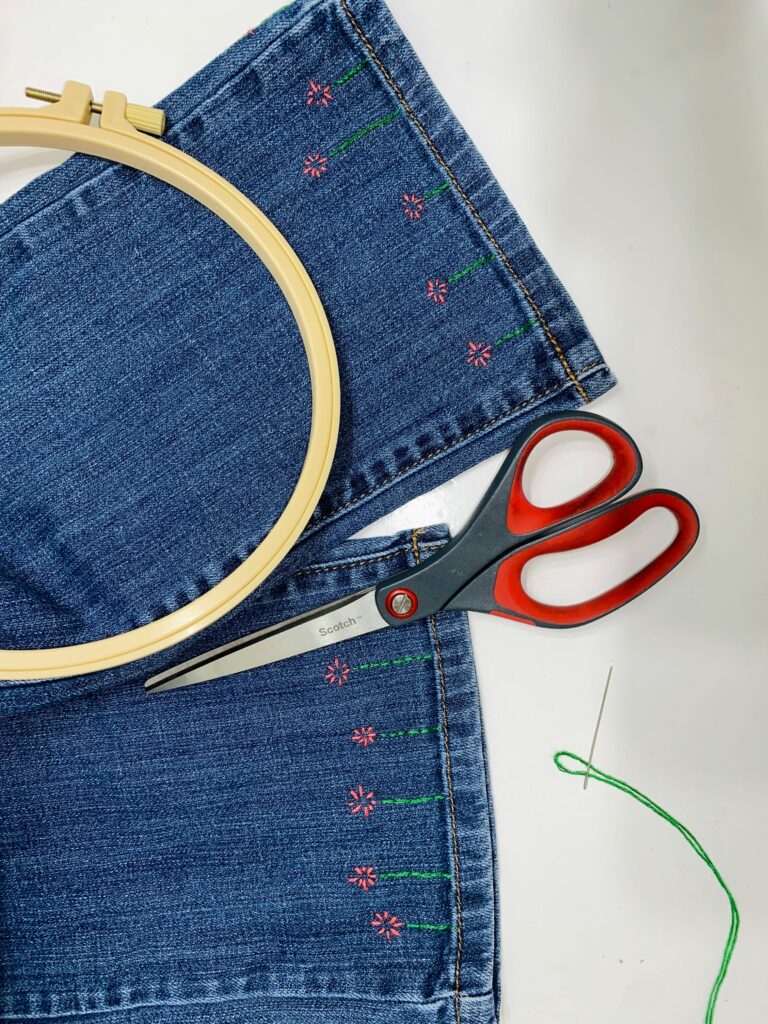In a market saturated with similar garments, it’s the detail that makes the difference. And often, that detail is embroidery: small, precise, and full of meaning. In this article, we’ll explore how it works, the best time to add it during the production process, and how to achieve a high-quality result.
Industrial embroidery: precision, aesthetics, and technique
Industrial embroidery uses automated machines to recreate designs such as logos, lettering, or decorative patterns with thread. This process requires technical expertise and a sharp eye for detail. At Fun Factory Mode, every embroidery is carried out with care, tailored to the specific needs of the customer and the type of fabric used.
Before proceeding, it’s essential to carefully evaluate the material, the garment’s purpose, its use, and the type of finishing. These factors directly affect the technique to be used and the final result.
When to embroider: before or after washing?
One of the most delicate aspects is choosing the right time to insert embroidery into the production cycle. Depending on the type of thread and the treatments planned for the garment, embroidery can be done either before or after industrial washing.
For example, if the garment is to undergo treatments such as stone washing and delicate, glossy, or colored threads are used, it’s advisable to embroider after washing. This avoids damage from chemical processes and preserves the structure and brightness of the embroidery.

Where and how can a garment be embroidered?
Embroidery is extremely versatile and can be applied in many ways, depending on the project’s requirements.
At Fun Factory Mode, we can embroider linings for an elegant and discreet effect, visible only to a keen eye. We also work on semi-finished parts, such as collars or front and back pockets, before assembly. This approach allows for greater precision, especially in hard-to-reach areas once the garment is complete.
Alternatively, based on customer needs, embroidery can be applied to finished garments in visible areas such as the chest, sleeves, or back.
In all cases, positioning is defined based on the model, the fabric, and the desired effect.
Brand identity
One of the most meaningful aspects of embroidery is the ability to customize every detail.
Thread color can reflect the brand’s palette, making the garment recognizable even without prominent logos. Threads can be glossy, matte, or metallic, with the thickness chosen to match the desired visual and tactile effect.
Clients can choose flat embroidery for a clean, essential look, or 3D embroidery for more depth and visual impact.
The nature of the fabric also plays a key role: technical, stretchy, or very lightweight materials require specific threads and techniques, which Fun Factory Mode has mastered in over forty years.
In our third-party production service, our strength lies in adaptability: we offer solutions ranging from prototypes to large-scale production, always with the same focus on detail and quality.
Thanks to advanced machinery and deep knowledge, we consistently deliver precise, durable embroidery that perfectly aligns with the customer’s style and values.
Why does embroidery make a difference?
Embroidery is not just decorative—it communicates identity, care, and quality. Knowing how to execute it properly, at the right time and with the most suitable materials, is what turns an ordinary garment into a high-end product.
Fun Factory Mode is the ideal partner for those seeking professional, customized embroidery, seamlessly integrated into the production process. By combining technique and creativity, we enhance every detail of your project.